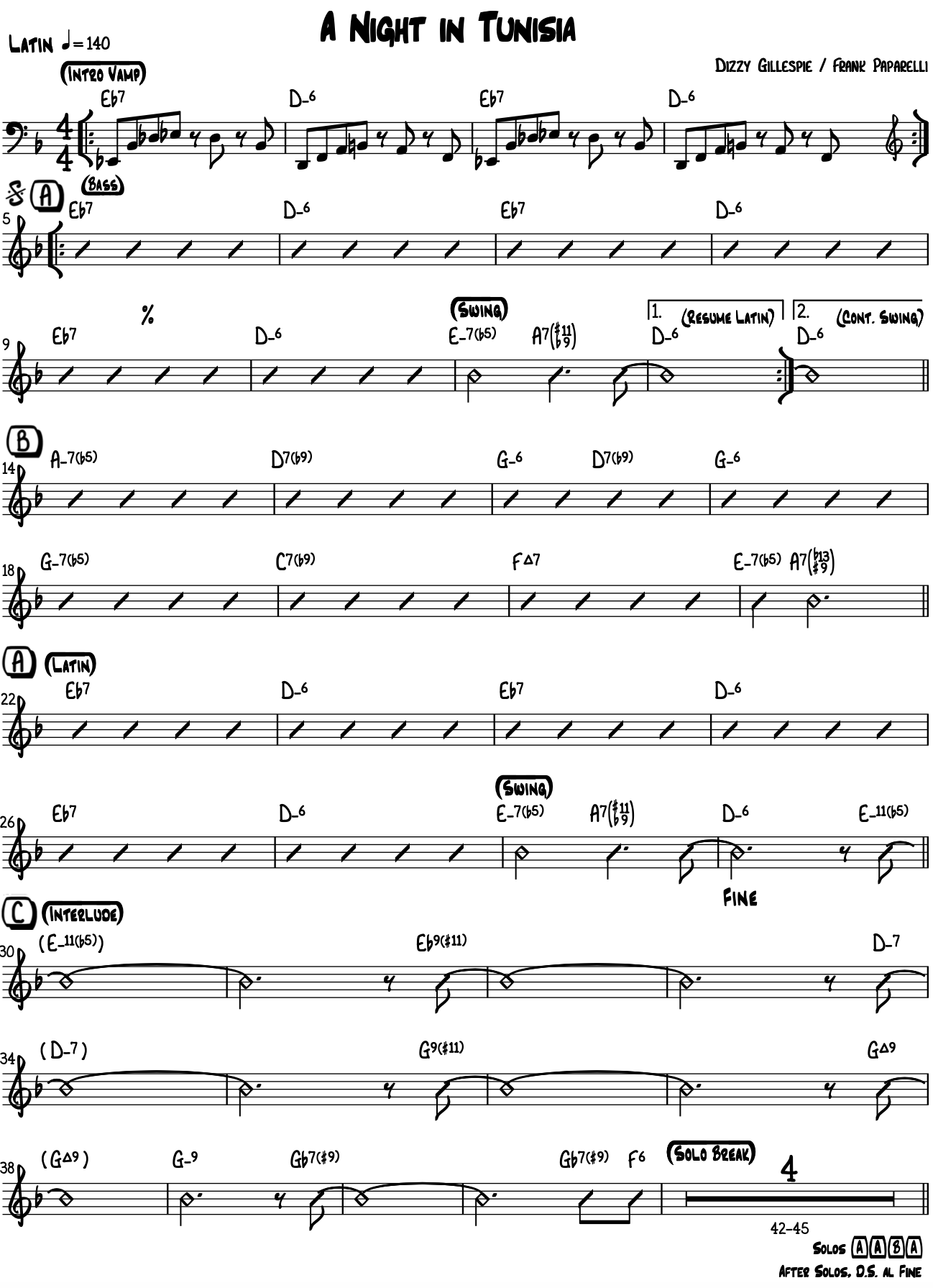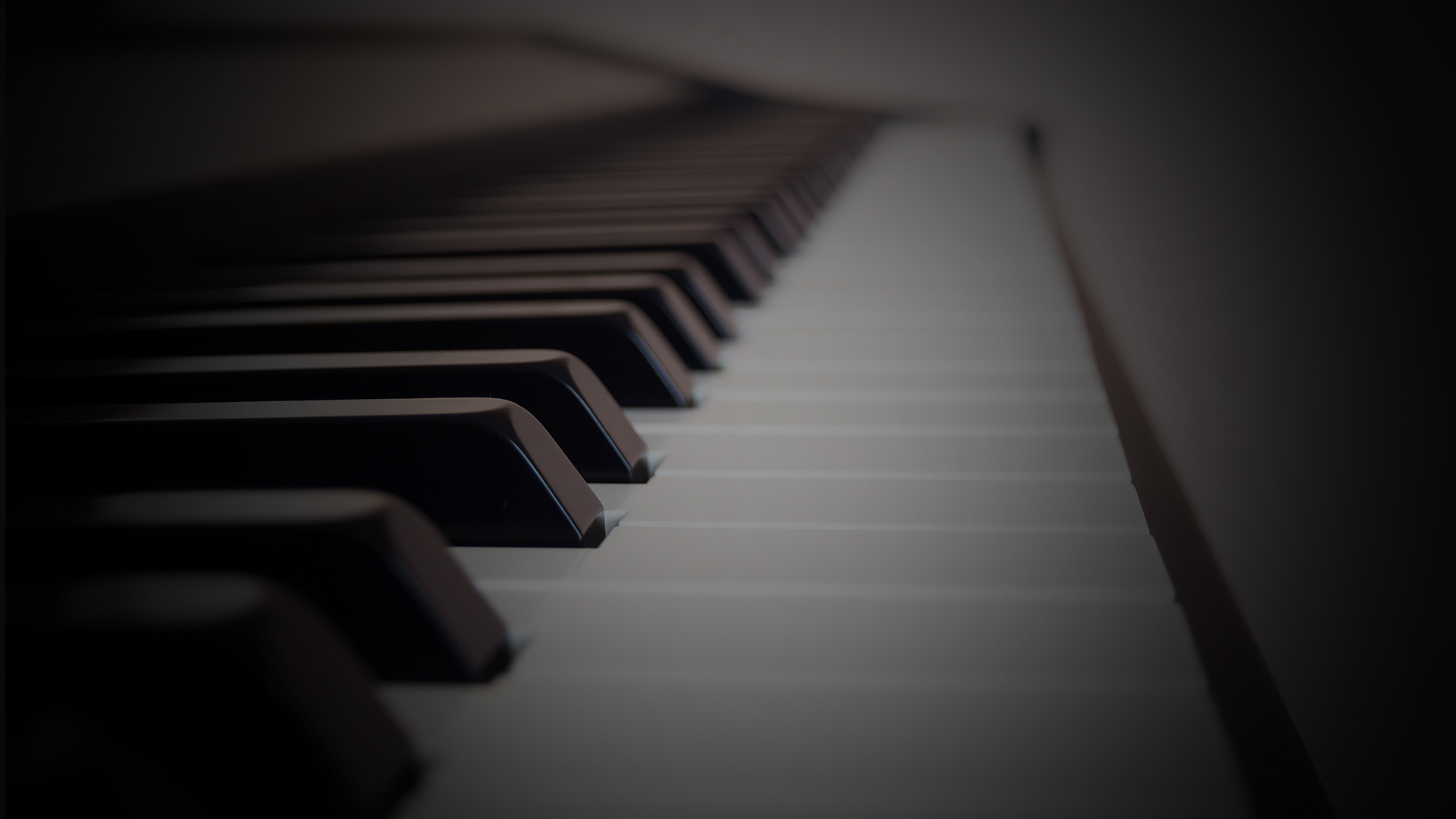A Night in Tunisia – Piano Accompaniment
Learning Focus
Music Style
Free Lessons
Get free weekly lessons, practice tips, and downloadable resources to your inbox!
For jazz piano students, learning tunes is a formative part of our jazz journey. In today’s Quick Tip, A Night in Tunisia – Piano Accompaniment, John Proulx shares how to navigate the lead sheet for this iconic bebop masterpiece by Dizzy Gillespie that blends innovative jazz harmonies with Afro-Cuban rhythms. You’ll learn:
- A Night in Tunisia: Songs Facts
- A Night in Tunisia: Lead Sheet
- Play “A Night in Tunisia” Accompaniment
A Night in Tunisia: Song Facts
“A Night in Tunisia” is a catchy and exotic-sounding bebop composition written in 1942 by influential jazz trumpeter Dizzy Gillespie. Ironically, the earliest recording of the song was released with a different title. In 1944, a twenty-year-old Sarah Vaughan recorded the tune as “Interlude.” While this early take is certainly the same tune as “A Night in Tunisia,” the lyrics that Vaughan sings are penned by Raymond Leveen and are different from the now-standard lyrics penned by Jon Hendricks. Check out Ella Fitzgerald’s 1961 studio recording from Clap Hands, Here Comes Charlie! to hear the modern lyrics.
Recordings and performances of “A Night in Tunisia” usually open with its distinctive and memorable bass line, a two-measure ostinato that also undergirds the A sections of the composition. While there are many fantastic recordings of “A Night in Tunisia,” here are three that stand out with exceptional demonstrations of improvisatory prowess.
Dizzy Gillespie
“A Night in Tunisia” (1946)
Miles Davis & Bird
“A Night in Tunisia” (1950)
Art Blakey
“A Night in Tunisia” (1960)
An interesting fact about “A Night in Tunisia” is that the earliest editions of The Real Book contained a slightly different melody for the interlude section. For instance, the melody that you hear in the recordings above is different from what was in print for decades! Moreover, because of the vast proliferation of The Real Book, it’s still common to hear the tune performed with the alternate printed melody, which remains in wide circulation. In 2004, music publisher Hal Leonard obtained rights to legally publish The Real Book–Sixth Edition and revisions were finally made to the printed melody.
Our lesson today includes both versions of the melody. After all, you may encounter either one on a jam session! Specifically, John performs the earlier print version in his video tutorial. However, the lesson sheet PDF for today’s lesson, which is available via our partners at MusicNotes.com, follows The Real Book–Sixth Edition.
A Night in Tunisia: Lead Sheet
In this section of today’s lesson, we’ll examine the harmony and structure of Dizzy Gillespie’s “A Night in Tunisia.” As music critic Ted Gioia indicates, “the harmonic movement in the interlude leading up to the solo break deserves to be studied in conservatory composition classes.”¹
Song Key
The standard key for Dizzy Gillespie’s “A Night in Tunisia” is D minor. The bridge section briefly explores other related tonal centers as is common in jazz composition.
Song Form
The song form for Dizzy Gillespie’s “A Night in Tunisia” is both traditional and innovative. For instance, the overall structure centers around a basic 32-bar AABA structure. However, the rhythmic feels transitions from “straight 8ths” in the A sections to “swung 8ths” in the B section. In addition, the tune also contains a catchy 12-bar interlude which leads up to an exciting 4-bar solo break that launches the solo section. Afterward, the soloists improvise over the AABA form until the ensemble collectively restates the melody over the AABA structure. Hence, the interlude is played only once.
Song Analysis
Dizzy Gillespie’s “A Night in Tunisia” is an example of a transition tune that blends elements of American jazz with Afro-Cuban rhythms.
For the A sections of “A Night in Tunisia,” the primary harmonic movement is from E♭7 to Dm6, where Dm6 functions as the tonic chord in D minor. Therefore, E♭7 functions as the subⅤ⁷ (see tritone substitution) for A⁷. The A section concludes with a minor 2-5-1 progression in the primary key of D minor.
The B section of “A Night in Tunisia” begins with a minor 2-5-1 progression in G minor, a closely-related key to D minor. Afterward, we get a hybrid 2-5-1 progression resolving to Fmaj7 (designated as “hybrid” because the chord quality of the ⅱ and Ⅴ suggest F minor). The bridge ends with a ⅱ→Ⅴ of D minor, which prepares for the return to the subⅤ⁷ of D minor upon the return of the A section.
The harmony for the interlude of “A Night in Tunisia” is brilliant and imaginative. Overall, the harmonic movement modulates from D minor its relative, F major. However, Gillespie uses striking chromaticism that employs a persistent common tone, the note A, in the melody. With each passing chord, the note A is reinterpreted as a new chord tone, extension or alteration. Moreover, this persistent A in the melody is woven through a fabric of descending 3-note melodic cells that gradually expand into wider and wider intervals which include various complex upper structure triads.
In the next section, you’ll learn how to expand the lead sheet for “A Night in Tunisia” into a complete, pro-sounding piano accompaniment.
Play “A Night in Tunisia” Accompaniment
In this section of today’s lesson, we’ll walk through the piano accompaniment for “A Night in Tunisia” one section at a time. If you’re already a PWJ member, you can download the piano sheet music for “A Night in Tunisia” from the bottom of this page after logging in with your membership. In addition, PWJ members can easily transpose the score to any key using our Smart Sheet Music. Due to publisher’s restrictions, the lesson sheet PDF containing the melody for “A Night in Tunisia” is available through our partners at MusicNotes.com.
Introduction
John Proulx’s arrangement of “A Night in Tunisia” opens with the tune’s iconic bass line in the left hand, which is played with a straight 8th-note feel. Once the right hand joins in, the L.H. part is simplified a bit.
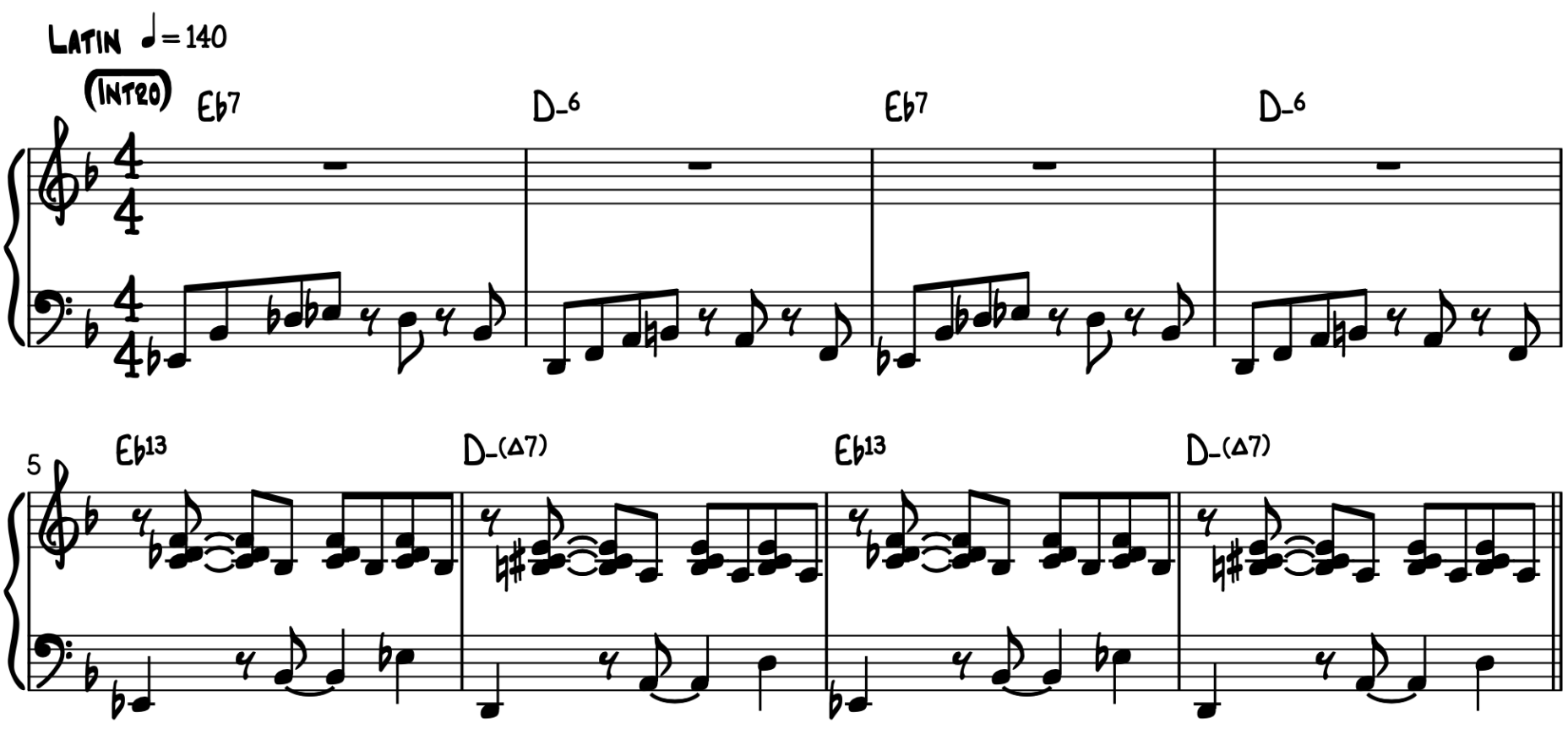
A Section
The A section for “A Night in Tunisia” continues the same basic groove that was established in the introduction. However, the last two bars of the A section transition into a swing feel. When the A section repeats, the initial “straight-8ths” feel returns.
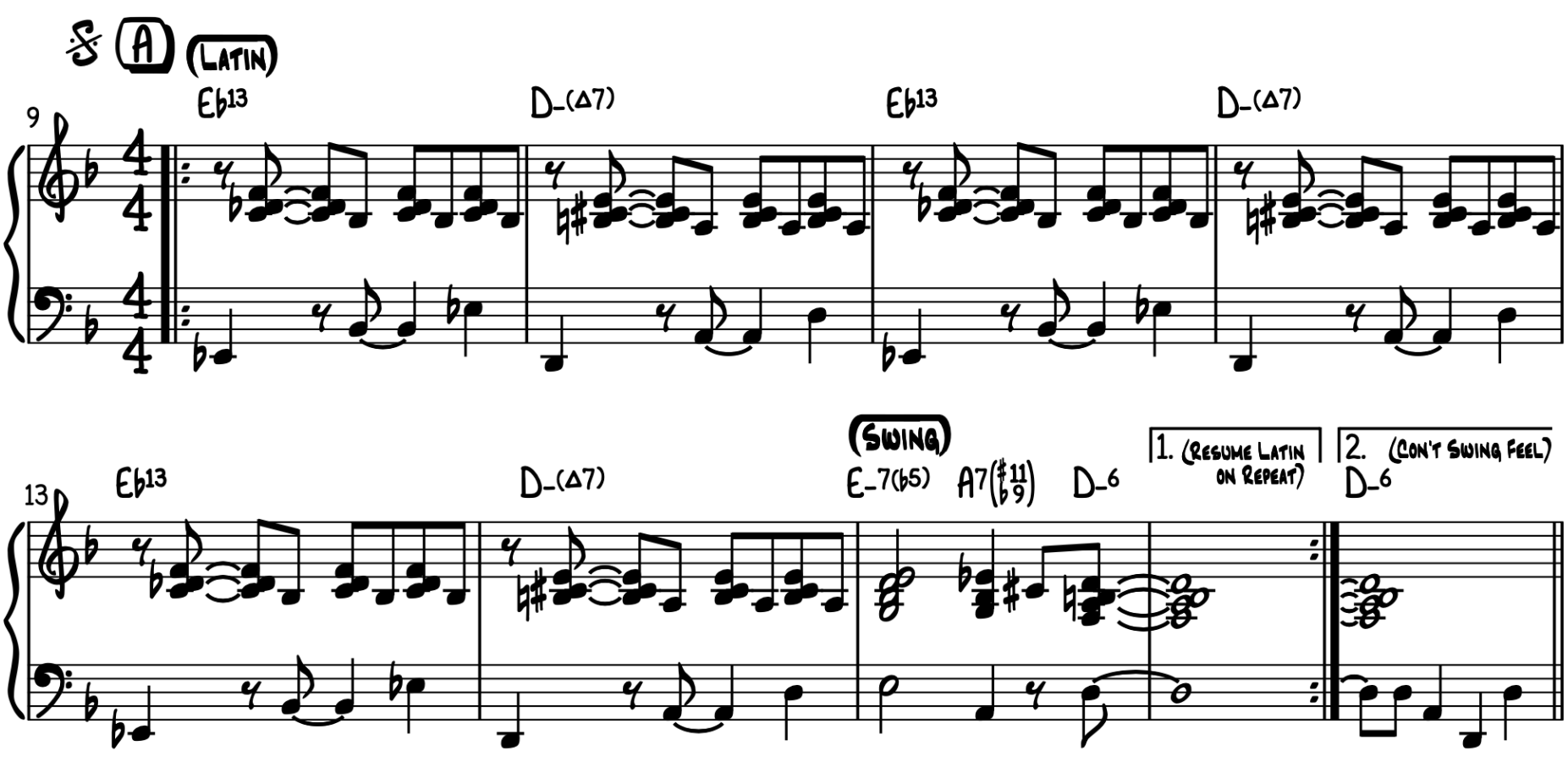
B Section
The B section (or bridge) of “A Night in Tunisia” features a straight ahead swing feel in 4 with a walking bass line. The right hand here uses 4-way close voicings, which are essentially a single-handed alternative to Shearing-style block chords.
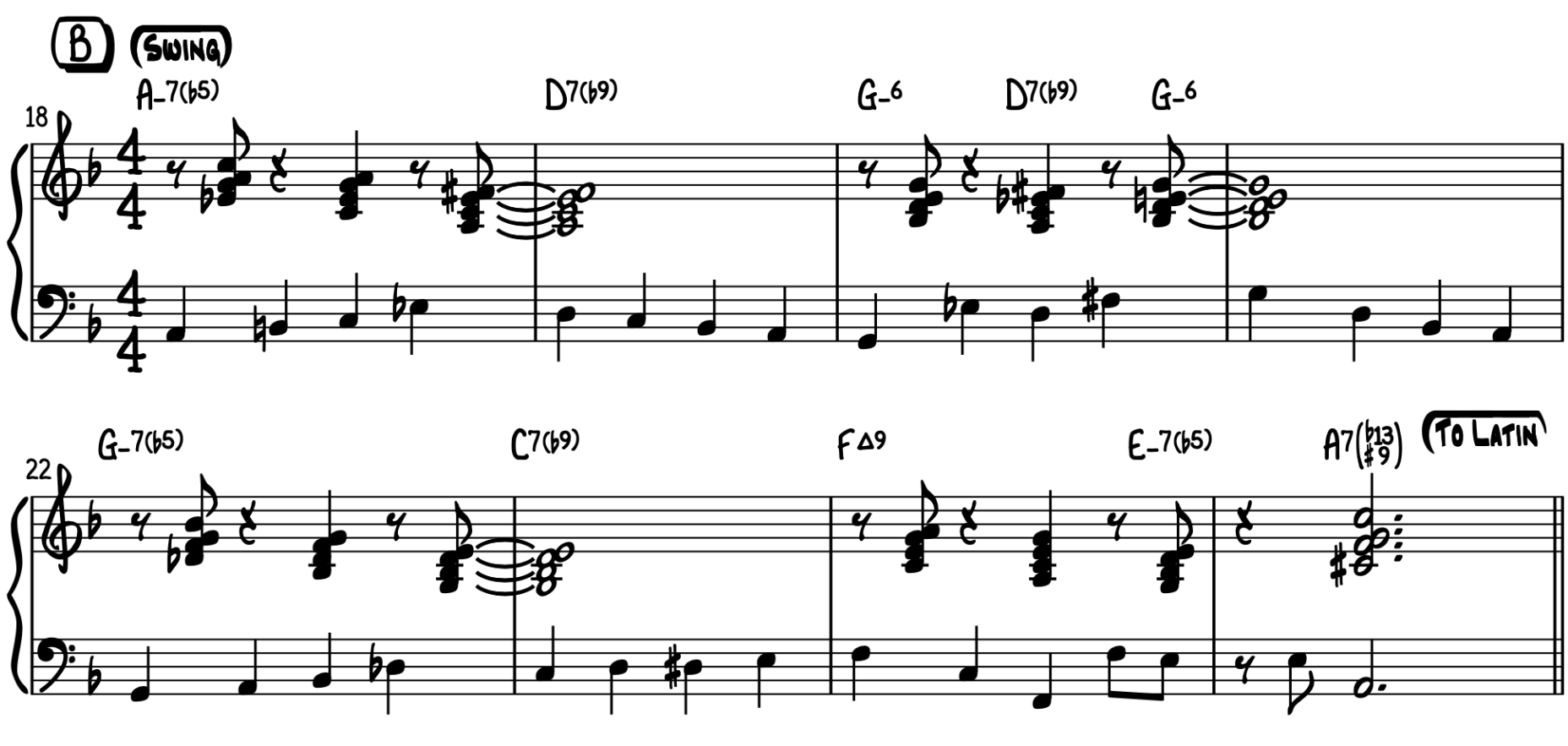
Aʹ Section
The return to the A section, which is often designated as A’ (pronounced “A prime”) for differentiation purposes, is nearly an exact repetition of the initial A section. However, this section concludes by preparing for the interlude, which includes several pick up notes in the melody. (Later, after the solo section has concluded, the tune ends in this section where the Italian term Fine—“the end”—appears in the score below).
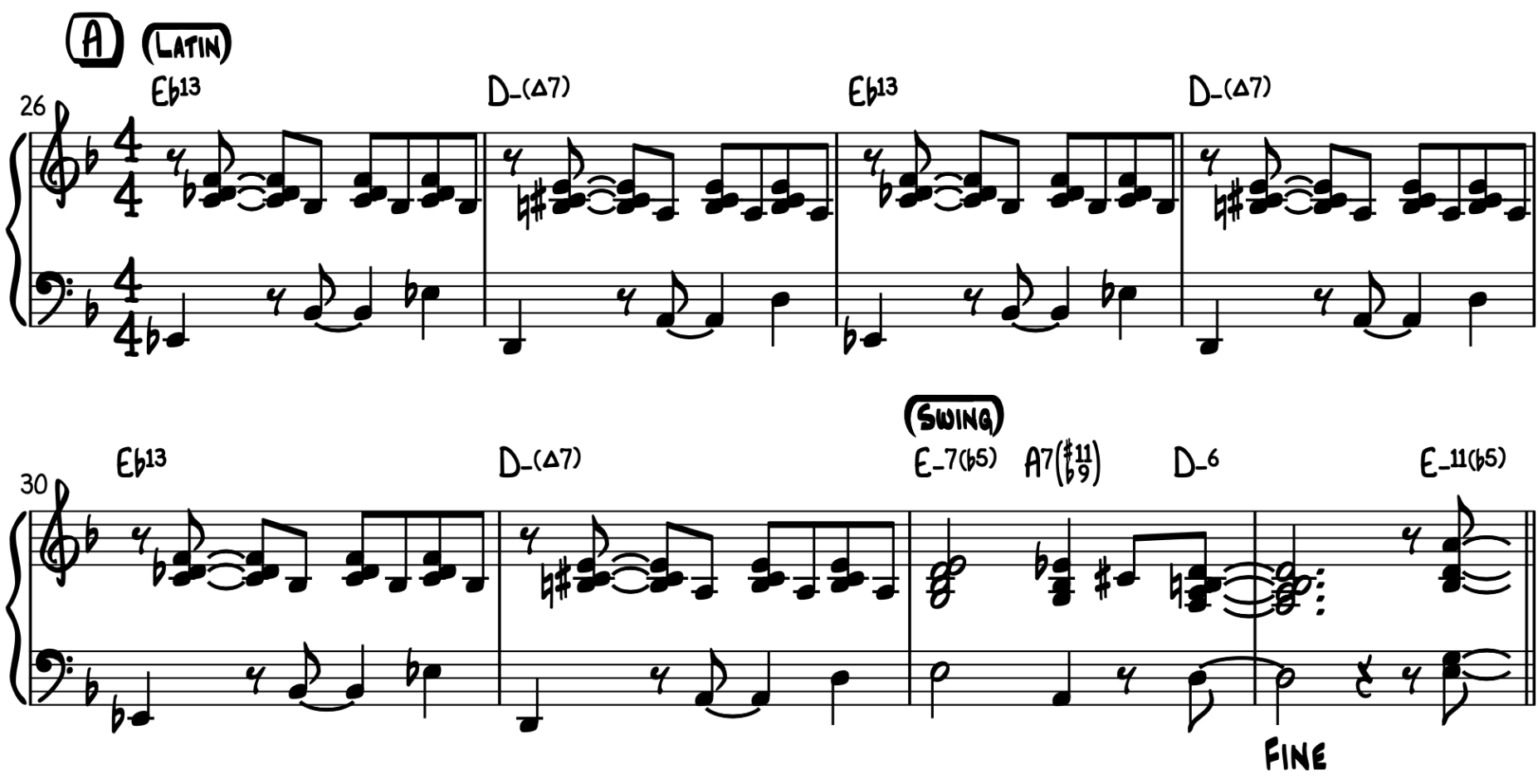
Interlude
The climactic interlude section of “A Night in Tunisia” is punctuated by dramatic hits from the rhythm section on the “and of 4” in every other measure. The final cadence of the interlude that launches into the solo break lands on an F major chord (F6/9 shown below). Therefore the soloist’s improv must transition from F major back to the relative key of D minor. Thus, he or she will play two measures of F major, one major of Eø7 and one measure of A7alt.
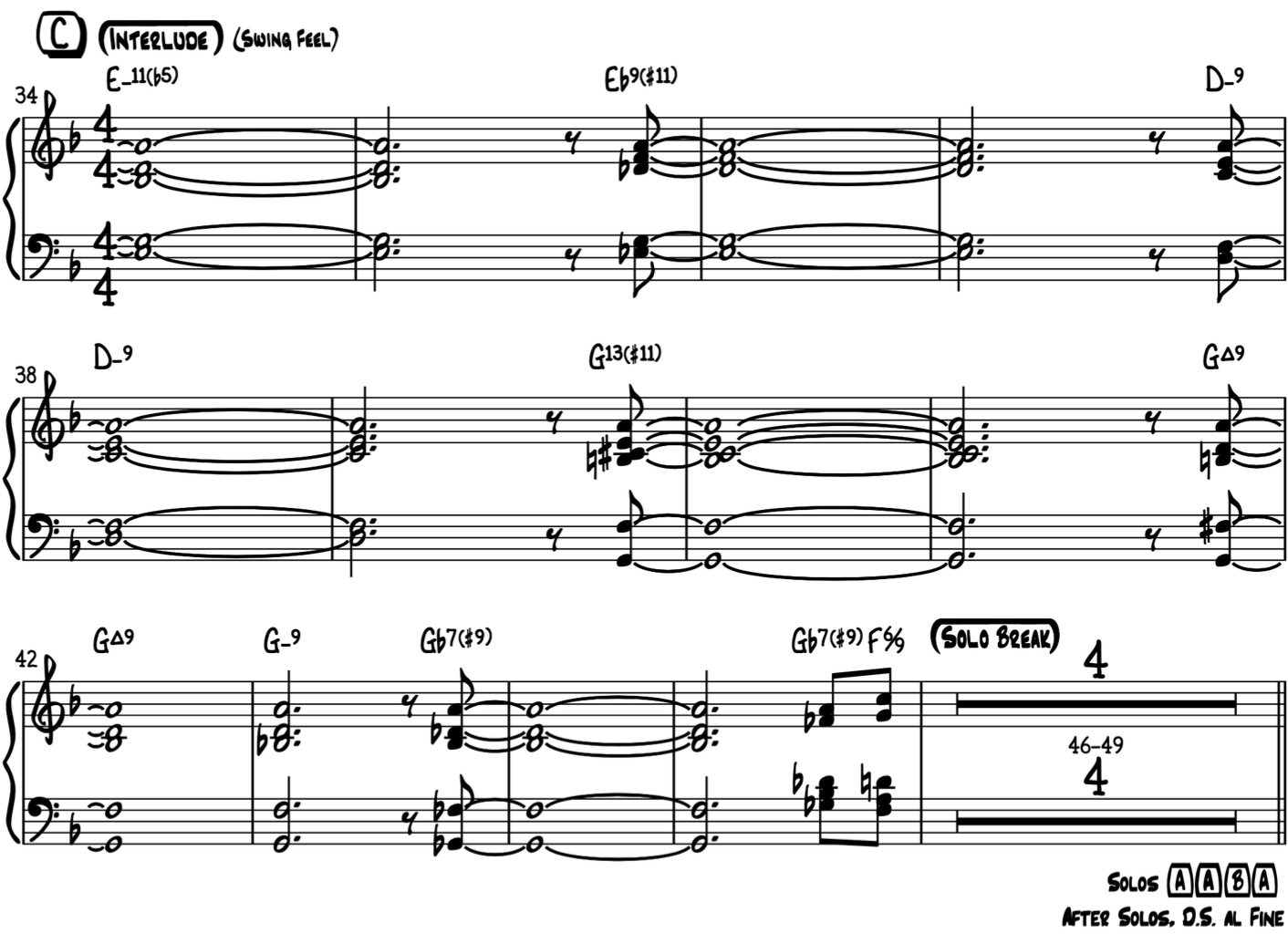
Conclusion
Congratulations, you’ve completed today’s lesson on “A Night In Tunisia” Piano Accompaniment. After examining and practicing the examples in this lesson, you’ll be ready to navigate this classic bebop standard like a pro!
If you enjoyed this lesson, then be sure to check out the following PWJ resources:
Courses
- Bossa Nova Rhythm Essentials (Beg/Int, Adv)
- Jazz Swing Rhythm Essentials (Beg, Int/Adv)
- Cycle of 5ths in 3 Jazz Styles (Int, Adv)
- Girl from Ipanema Challenge (Beg, Int, Adv)
- 5 Jazz Comping Approaches (Int, Adv)
- Jazz Walking Bass Lines (Int, Adv)
- Jazz Swing Accompaniment (Int, Adv)
- All the Things You Are (Int, Adv)
Quick Tips
Latin Jazz Learning Tracks
Jazz Swing Learning Tracks
Thanks for learning with us today! We’ll see you next time.
Would you like to comment on this lesson?
Visit this Quick Tip on YouTube
¹ Gioia Ted. The Jazz Standards : A Guide to the Repertoire. Second ed. Oxford University Press 2012, p 299–300.
 Writer
Writer
Michael LaDisa
Michael LaDisa graduated from the University of North Texas with a major in Music Theory & Composition. He lives in Chicago where he operates a private teaching studio and performs regularly as a solo pianist. His educational work with students has been featured on WGN-TV Evening News, Fox 32 Good Day,...
More Free Lessons
If there is one passing chord that you should know, this is it! It's my go-to passing chord, and it works on almost every song.
Want to master piano chords? In this one-year practice plan, I show you what to practice every day for the next year.
Alma Deutscher shows us how to improvise a beautiful piano piece with just 4 notes randomly chosen from a hat.
Looking for downloads?
Subscribe to a membership plan for full access to this Quick Tip's sheet music and backing tracks!
Join Us
Get instant access to this Quick Tip and other member features with a PWJ membership!
Guided Learning Tracks
View guided learning tracks for all music styles and skill levels
Progress Tracking
Complete lessons and courses as you track your learning progress
Downloadable Resources
Download Sheet Music and Backing Tracks
Community Forums
Engage with other PWJ members in our member-only community forums
Become a better piano player today. Try us out completely free for 14 days!


